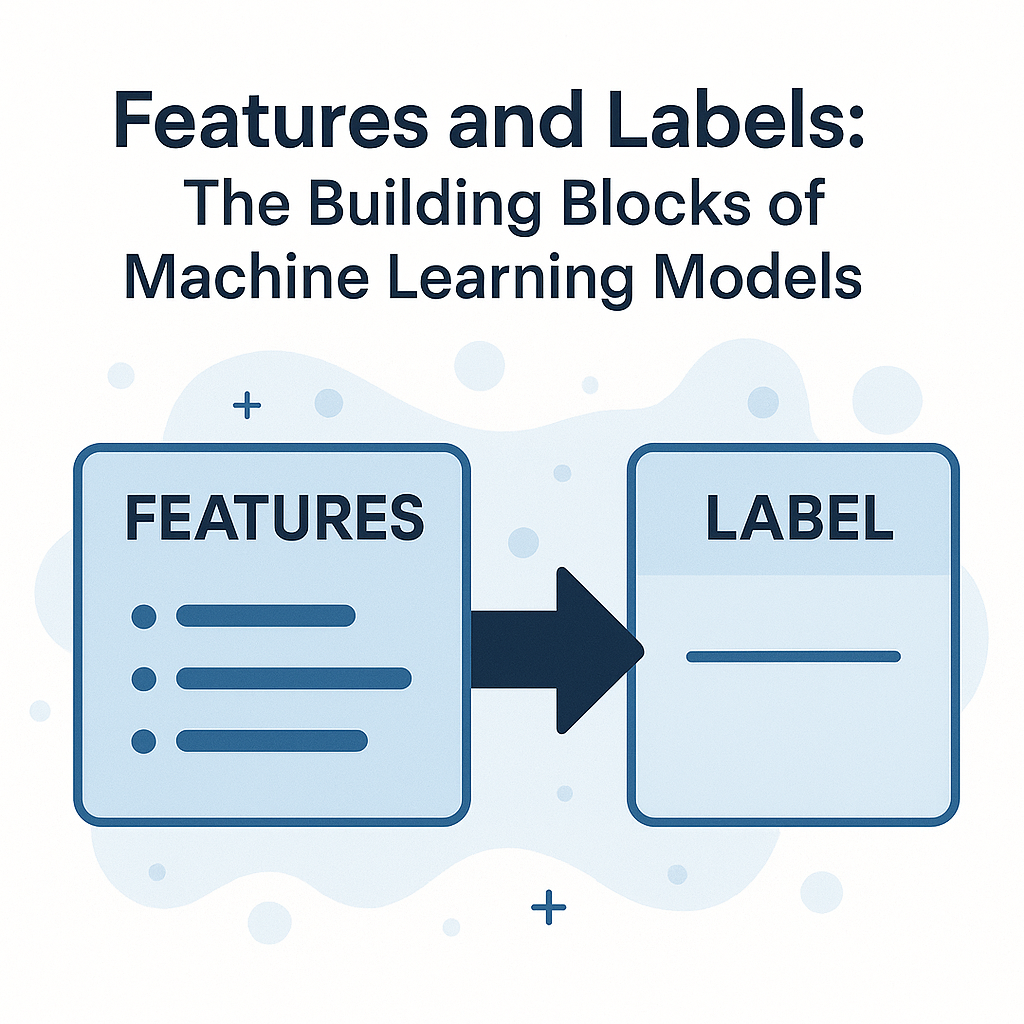
In machine learning, the process of training a model involves feeding it data so it can learn patterns and make predictions. Two fundamental concepts in this process are features and labels. Understanding these concepts is crucial for building effective machine learning models.
What are Features?
Features are the input variables used by a machine learning model to make predictions. They are the individual measurable properties or characteristics of a phenomenon being observed. Think of them as the “questions” you ask the model to help it understand the data.
- Definition: Features are the independent variables that the model uses to predict the outcome.
- Examples:
- In a model predicting house prices, features might include:
- Square footage
- Number of bedrooms
- Number of bathrooms
- Location (e.g., zip code)
- In a model classifying emails as spam or not spam, features might include:
- The presence of certain words (e.g., “discount,” “urgent”)
- The sender’s email address
- The length of the email
- In a model predicting house prices, features might include:
- Types of Features:
- Numerical Features: Represented by numbers (e.g., age, temperature).
- Categorical Features: Represent categories or labels (e.g., color, city).
- Text Features: Represented by text (e.g., email content, product reviews).
What are Labels?
Labels are the output variables that the model is trained to predict. They are the “answers” that the model learns to associate with the input features.
- Definition: Labels are the dependent variables that represent the outcome or target variable.
- Examples:
- In a model predicting house prices, the label is the actual price of the house.
- In a model classifying emails as spam or not spam, the label is “spam” or “not spam.”
- Types of Labels:
- Binary Labels: Two possible outcomes (e.g., yes/no, true/false).
- Categorical Labels: Multiple possible outcomes (e.g., red/green/blue, dog/cat/bird).
- Continuous Labels: A range of numerical values (e.g., temperature, price).
The Relationship Between Features and Labels
The goal of training a machine learning model is to learn the relationship between the features and the labels. The model uses this learned relationship to make predictions on new, unseen data.
- Training Data: The data used to train the model, consisting of pairs of features and corresponding labels.
- Model Learning: The model adjusts its internal parameters to minimize the difference between its predictions and the actual labels in the training data.
- Prediction: Once trained, the model can take new features as input and predict the corresponding label.
Example: Predicting Customer Churn
Let’s consider a scenario where you want to predict whether a customer will churn (i.e., stop using your service).
- Features:
- Age
- Subscription duration
- Number of support tickets opened
- Average monthly spending
- Label:
- Churn (Yes/No)
In this case, the machine learning model will learn from historical data to identify patterns between these features and whether a customer churned. For example, it might learn that customers with a short subscription duration and multiple support tickets are more likely to churn.
Importance of Feature Selection and Engineering
The quality and relevance of features have a significant impact on the performance of a machine learning model.
- Feature Selection: Choosing the most relevant features to include in the model.
- Feature Engineering: Creating new features from existing ones to improve the model’s predictive power.
For example, instead of using the raw “age” feature, you might create a new feature called “age group” (e.g., young, middle-aged, senior) to capture non-linear relationships.
Conclusion
Features and labels are the fundamental building blocks of machine learning models. By understanding what they are, how they relate to each other, and how to select and engineer them effectively, you can build more accurate and reliable models.
